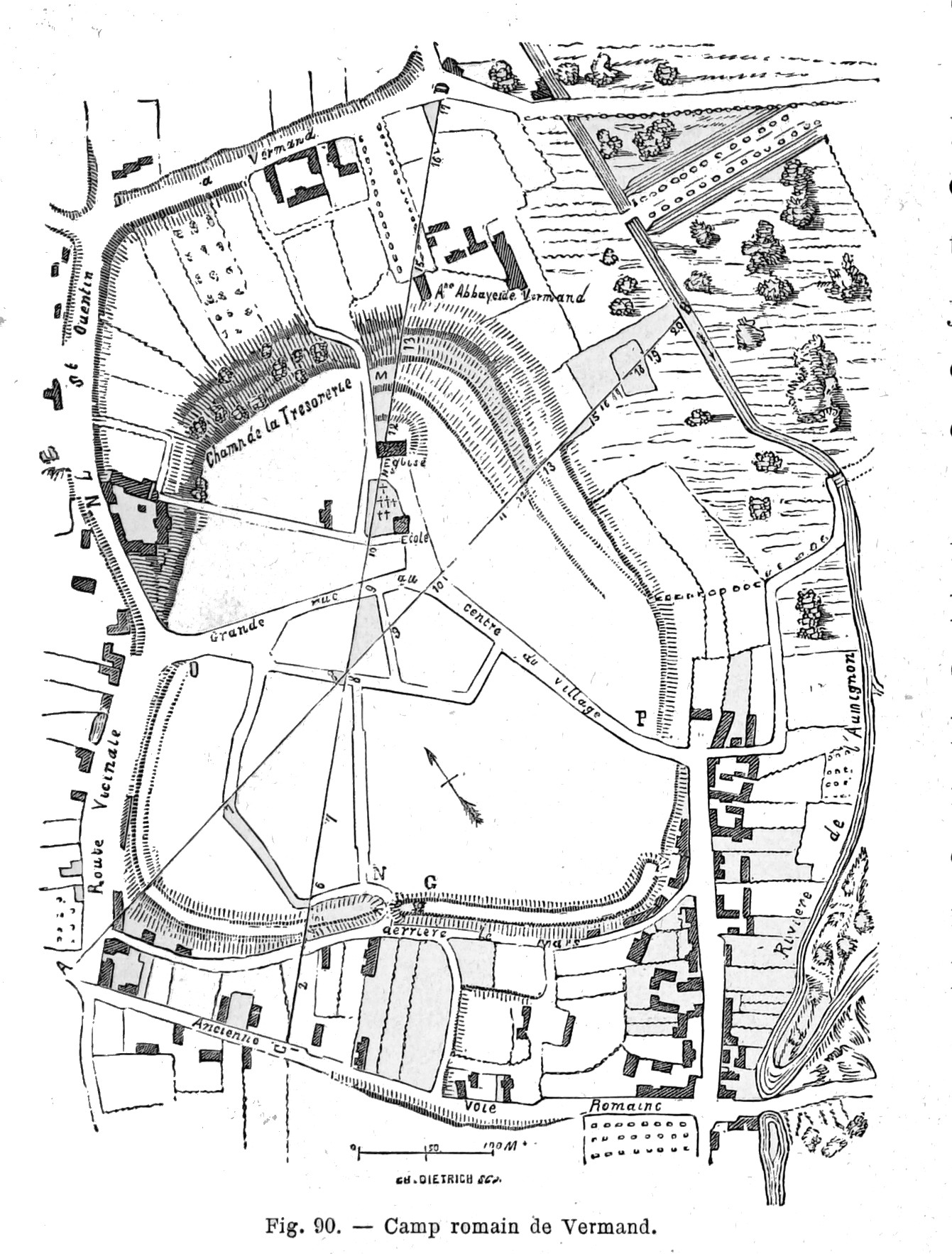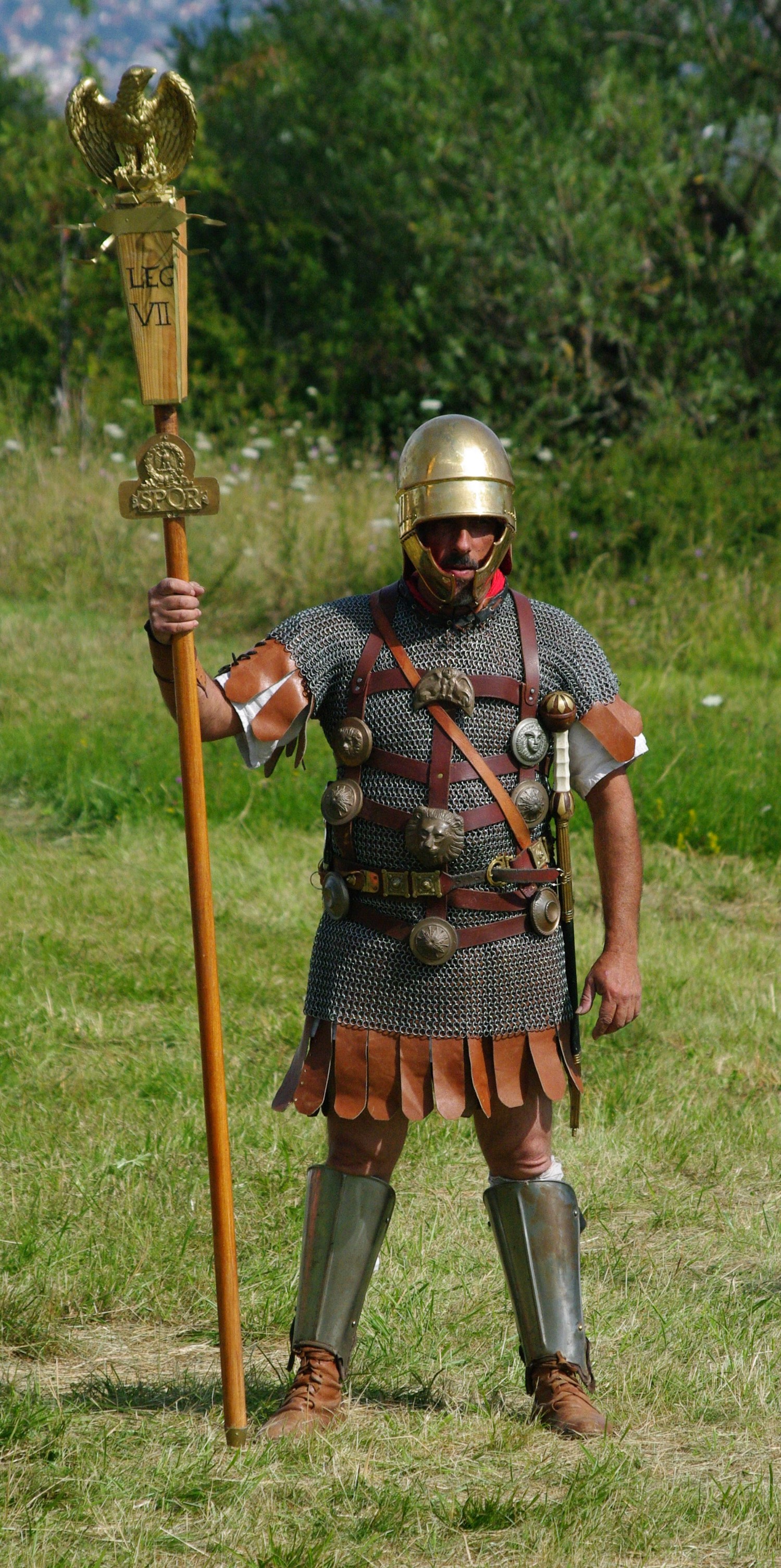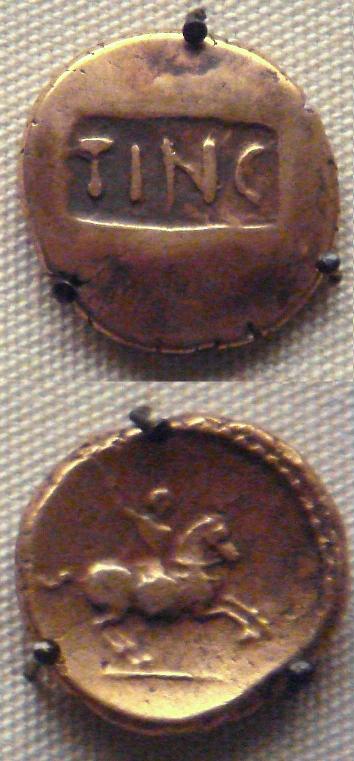|
Viromandui
The Viromanduī or Veromanduī (Gaulish: *''Uiromanduoi'') were a Belgic tribe dwelling in the modern Vermandois region (Picardy) during the Iron Age and Roman periods. During the Gallic Wars (58–50 BC), they belonged to the Belgic coalition of 57 BC against Caesar. Name They are mentioned as ''Viromanduos'' and ''Viromanduis'' (var. ''vero''-) by Caesar (mid-1st c. BC), ''Viromanduos'' by Livy (late 1st c. BC), ''Veromandui'' (var. ''uir''-) by Pliny (1st c. AD), ''(Ou̓i)romándues'' () by Ptolemy (2nd c. AD), and as ''Veromandi'' by Orosius (early 5th c. AD). The ethnonym ''Viromanduī'' is a latinized form of Gaulish *''Uiromanduoi'' (sing. ''Uiromanduos''), which literally means 'horse-men' or 'male ponies'. It derives from the stem *''uiro-'' ('man') attached to ''mandos'' ('pony'). It should perhaps be interpreted as the 'Centaurs' or as the ' envirile in owning ponies'. Pierre-Yves Lambert has also proposed the meaning 'those who trample upon men', by comparing the s ... [...More Info...] [...Related Items...] OR: [Wikipedia] [Google] [Baidu] |
Saint-Quentin, Aisne
Saint-Quentin (; ; ) is a city in the Aisne Departments of France, department, Hauts-de-France, northern France. It has been identified as the ''Augusta Veromanduorum'' of antiquity. It is named after Saint Quentin, Saint Quentin of Amiens, who is said to have been martyred there in the 3rd century. Administration Saint-Quentin is a Subprefectures in France, sub-prefecture of Aisne. Although Saint-Quentin is by far the largest city in Aisne, the capital is the third-largest city, Laon. Mayors The mayor of Saint-Quentin is Frédérique Macarez, a member of the centre-right The Republicans (France), LR Party. History The city was founded by the Romans, in the Augustus, Augustean period, to replace the ''oppidum'' of Vermand (11 km away) as the capital of ''Viromandui'' (Celtic Belgian people who occupied the region). It received the name "''Augusta Viromanduorum''", ''Augusta'' of the ''Viromandui'', in honor of the emperor Augustus. The site is that of a river ford, fo ... [...More Info...] [...Related Items...] OR: [Wikipedia] [Google] [Baidu] |
Belgae
The Belgae ( , ) were a large confederation of tribes living in northern Gaul, between the English Channel, the west bank of the Rhine, and the northern bank of the river Seine, from at least the third century BC. They were discussed in depth by Julius Caesar in his Commentarii de Bello Gallico, account of his wars in Gaul. Some peoples in southern Roman Britain, Britain were also called Belgae and had apparently moved from the continent. T. F. O'Rahilly believed that some had moved further west and he equated them with the Fir Bolg in Ireland. The Roman province of Gallia Belgica was named after the continental Belgae. The term continued to be used in the region until the present day and is reflected in the name of the modern country of Belgium. Etymology The consensus among linguists is that the ethnic name ''Belgae'' probably comes from the Proto-Celtic root ''*belg-'' or ''*bolg-'' meaning "to swell (particularly with anger/battle fury/etc.)", cognate with the Dutch language ... [...More Info...] [...Related Items...] OR: [Wikipedia] [Google] [Baidu] |
Gallic Wars
The Gallic Wars were waged between 58 and 50 BC by the Roman general Julius Caesar against the peoples of Gaul (present-day France, Belgium, and Switzerland). Gauls, Gallic, Germanic peoples, Germanic, and Celtic Britons, Brittonic tribes fought to defend their homelands against an aggressive Roman Military campaign, campaign. The Wars culminated in the decisive Battle of Alesia in 52 BC, in which a complete Roman victory resulted in the expansion of the Roman Republic over the whole of Gaul. Though the collective Gallic armies were as strong as the Roman forces, the Gallic tribes' internal divisions eased victory for Caesar. Gallic chieftain Vercingetorix's attempt to unite the Gauls under a single banner came too late. Caesar portrayed the invasion as being a preemptive and defensive action, but historians agree that he fought the wars primarily to boost his political career and to pay off his debts. Still, Gaul was of significant military importance to the Romans. ... [...More Info...] [...Related Items...] OR: [Wikipedia] [Google] [Baidu] |
Noyon
Noyon (; ; , Noviomagus of the Viromandui, Veromandui, then ) is a Communes of France, commune in the Oise Departments of France, department, Northern France. Geography Noyon lies on the river Oise (river), Oise, about northeast of Paris. The Oise Canal and the Canal du Nord pass through the commune. Noyon station is served by regional trains to Creil, Saint-Quentin, Compiègne and Paris. History The town was founded as Noviomagus (Common Celtic, Celtic for "New Field" or "Market"). As several other cities shared the name, it was distinguished by specifying the people living in and around it. The town is mentioned in the Antonine Itinerary as being 27 Roman miles from Soissons and 34 Roman miles from Amiens, but Jean Baptiste Bourguignon d'Anville, d'Anville noted that the distance must be in error, Amiens being further and Soissons closer than indicated. By the Middle Ages, the town's Vulgar Latin, Latin name had mutated to Noviomum. The town was strongly fortified ... [...More Info...] [...Related Items...] OR: [Wikipedia] [Google] [Baidu] |
Vermand
Vermand (; Picard: ''Vermind'') is a commune in the Aisne department in Hauts-de-France in northern France. History Vermand was probably the original capital of the Viromandui, after whom the region of Vermandois is named. It was later displaced by the Roman settlement of Augusta Viromanduorum, modern Saint-Quentin.Jean-Luc Collart and Michèle Gaillard"Vermand /Augusta Viromanduorum (Aisne)" ''Supplément à la Revue archéologique du centre de la France'', 25, 1 (2004): 493–96. Population See also *Communes of the Aisne department The following is a list of the 796 communes in the French department of Aisne. The communes cooperate in the following intercommunalities (as of 2025):Communes of Aisne [...More Info...] [...Related Items...] OR: [Wikipedia] [Google] [Baidu] |
Vermandois
Vermandois was a French county that appeared in the Merovingian period. Its name derives from that of an ancient tribe, the Viromandui. In the 10th century, it was organised around two castellan domains: St Quentin (Aisne) and Péronne ( Somme). In today's times, the Vermandois county would fall in the Picardy region of northern France. Pepin I of Vermandois, the earliest of its hereditary counts, was descended in direct male line from the emperor Charlemagne. More famous was his grandson Herbert II (902–943), who considerably increased the territorial power of the house of Vermandois, and kept the lawful king of France, the unlucky Charles the Simple, prisoner for six years. Herbert II was son of Herbert I, lord of Péronne and St Quentin, who was killed in 902 by an assassin in the pay of Baldwin II, Count of Flanders. His successors, Albert I, Herbert III, Albert II, Otto and Herbert IV, were not as historically significant. In 1077, the last count of the firs ... [...More Info...] [...Related Items...] OR: [Wikipedia] [Google] [Baidu] |
Nervii
The Nervii or Nervians were one of the most powerful Belgae, Belgic tribes of northern Gaul at the time of its conquest by Rome. Their territory corresponds to the central part of modern Belgium, including Brussels, and stretched southwards to Cambrai in French Hainaut. During their first century BC Roman military campaign, Julius Caesar's contacts among the Remi stated that the Nervii were the most warlike of the Belgae. In times of war, they were known to trek long distances to take part in battles. Being one of the northerly Belgic tribes, with the Menapii to the west, and the Eburones to their east, they were considered by Caesar to be relatively uncorrupted by civilization. According to Tacitus they claimed List of early Germanic peoples, Germanic descent. According to Strabo they were of Germanic origin. Name They are mentioned as ''Nervii'' by Julius Caesar, Caesar (mid-1st c. BC) and Orosius (early fifth c. AD), ''Neroúioi'' (Νερούιοι) by Strabo (early first c. ... [...More Info...] [...Related Items...] OR: [Wikipedia] [Google] [Baidu] |
Bellovaci
The Bellovaci (Gaulish: ''Bellouacoi'') were a Belgic tribe dwelling in the modern Picardy region, near the present-day city of Beauvais, during the Iron Age and the Roman period. After they were defeated by Caesar in 57 BC, they gave lukewarm support to the Gallic revolt led by Vercingetorix in 52 BC. The Bellovaci nonetheless organized resistance against Rome in 51 BC. Name They are mentioned as ''Bellovacos'' and ''Bellovaci'' by Caesar (mid-1st c. BC), ''Belloákoi'' (Βελλοάκοι) by Strabo (early 1st c. AD), ''Bellovaci'' by Pliny (1st c. AD), and as ''Belloúakoi'' (Βελλούακοι) by Ptolemy (2nd c. AD). The ethnonym ''Bellovacī'' is a latinized form of Gaulish ''Bellouacoi'' (sing. ''Bellouacos''). The latter derives from the stem ''bello-'' ('strong, forceful'), but the translation of the suffix -''uaco-'' is uncertain. It could mean 'curved' (cf. Lat. ''uaccilare''), or else be related to the Irish ''fachain'' ('striving') and the Scottish Gaelic ... [...More Info...] [...Related Items...] OR: [Wikipedia] [Google] [Baidu] |
Atrebates
The Atrebates (Gaulish: *''Atrebatis'', 'dwellers, land-owners, possessors of the soil') were a Belgic tribe of the Iron Age and the Roman period, originally dwelling in the Artois region. After the tribes of Gallia Belgica were defeated by Caesar in 57 BC, 4,000 Atrebates participated in the Battle of Alesia in 53, led by their chief Commius. They revolted again in 51 BC, after which they maintained a friendly relationship with Rome, as Commius received sovereignty over the neighbouring Morini. The quality of their woollens is still mentioned in 301 AD by Diocletian's Price Edict. An offshoot of the Belgic tribe probably entered Britain before 54 BC, where it was successively ruled by kings Commius, Tincommius, Eppillus and Verica. After 43 AD, only parts of the area were still controlled by king Claudius Cogidubnus, after which they fell under Roman power. Name They are mentioned as ''Atrebates'' by Caesar (mid-1st c. BC) and Pliny (1st c. AD), ''Atrebátioi'' (Ἀ� ... [...More Info...] [...Related Items...] OR: [Wikipedia] [Google] [Baidu] |
Ambiani
The Ambiani (Gaulish: ''Ambiāni'', 'those around') were a Belgic coastal tribe dwelling in the modern Picardy region during the Iron Age and Roman periods. They settled in the region between the 4th century and the second part of the 2nd century BC. In 113–101 BC, they took part in the fights against the Cimbri and Teutoni invaders during the Cimbrian War. In 57 and 52 BC, they participated in Gallic coalitions against Caesar, before their eventual subjugation by Rome in 51 BC. The Ambiani are known for their gold coinage, found in both northern France and Britain, which attest of extensive trading relations across the Channel. Name They are mentioned as ''Ambianos'' and ''Ambianis'' by Caesar (mid-1st c. BC), ''Ambianos'' in the summary of Livy's ''Ab Urbe Condita Libri'' (late 1st c. BC), ''Ambianoì'' (Ἀμβιανοὶ) and ''Ambianoĩs'' (Ἀμβιανοῖς) by Strabo (early 1st c. AD), ''Ambiani'' by Pliny (1st c. AD), ''Ambianoí'' (Ἀμβιανοί) by Ptolemy ... [...More Info...] [...Related Items...] OR: [Wikipedia] [Google] [Baidu] |
Moislains
Moislains () is a commune in the Somme department in Hauts-de-France in northern France. Geography Moislains is situated on the D184 and D43 crossroads, some northwest of Saint-Quentin. Population Personalities Ferdinand Carré, engineer, was born at Moislains in 1824. See also *Communes of the Somme department The following is a list of the 771 communes of the Somme department of France. The communes cooperate in the following intercommunalities (as of 2025):Communes of Somme (department) Viromandui {{Péronne-geo-stub ... [...More Info...] [...Related Items...] OR: [Wikipedia] [Google] [Baidu] |
Ancient Diocese Of Noyon
The former French Catholic Diocese of Noyon lay in the north-east of France, around Noyon. It was formed when Saint Medardus moved the seat of the bishopric at Vermandois to Noyon, in the sixth century. From 545 to 1146, it was united with the bishopric of Tournai as the Diocese of Noyon–Tournai. Then in the twelfth century it was again independent, and the bishop of Noyon became a ''peer of France, pairie-comté'' of France. The diocese of Noyon was brought to an end by the French Revolution. Its territory passed to the diocese of Beauvais. List of bishops Early bishops * Faustin * Gondulph * Evroul * Bertimond * c. 531–545 : Medardus Unified with Tournai * 540 : Eleutherius of Tournai (Eleuthere) * c. 549 and 552 : Agrecius * 545 : Medardus *Then jointly with Noyon * c. 626–c. 638 : Acarius * 642–660: Saint Eligius * 660–686: Mommolin of Noyon, Saint Mommolin * Gondoin * c. 700 : Antgaire * c. 715 : Chrasmar * c. 721 : Garoul * c. 723 : Framenger * c. 730 : Hunuan * ... [...More Info...] [...Related Items...] OR: [Wikipedia] [Google] [Baidu] |





